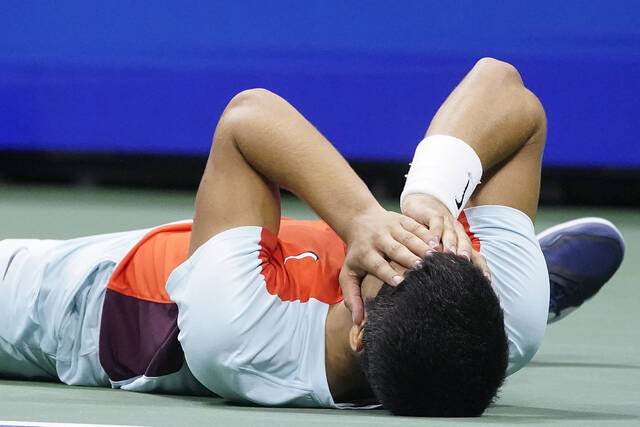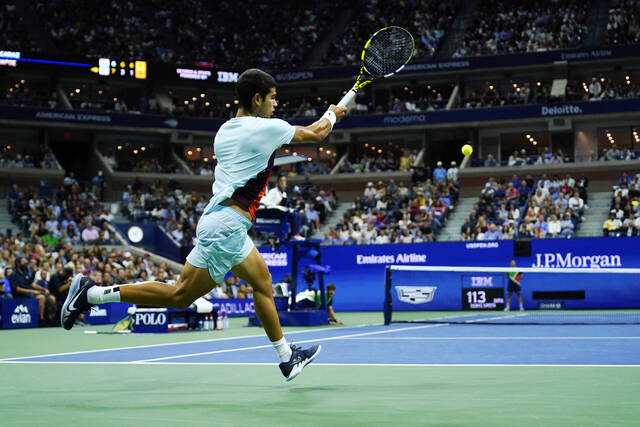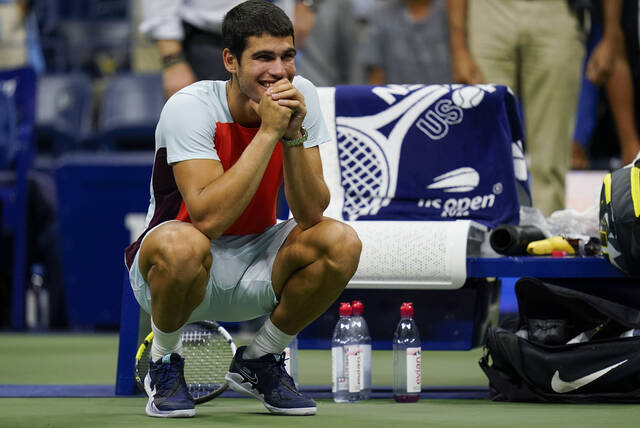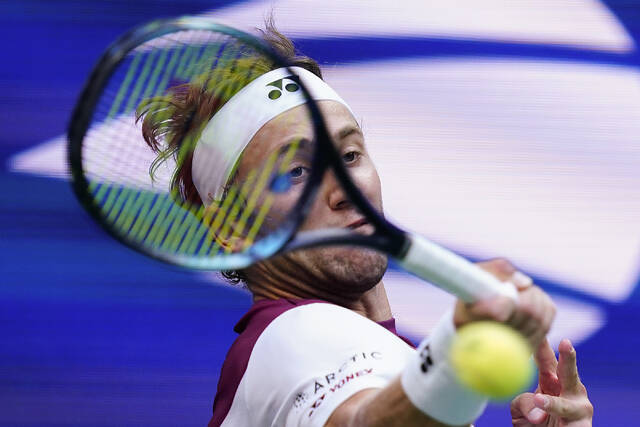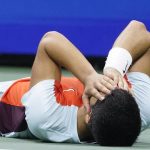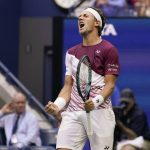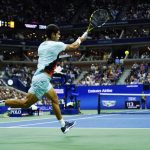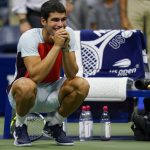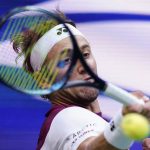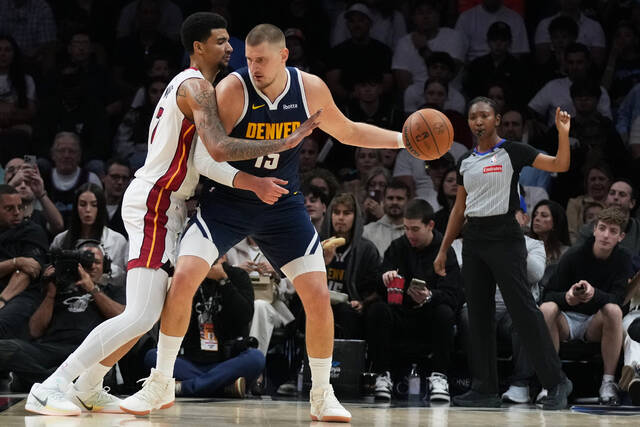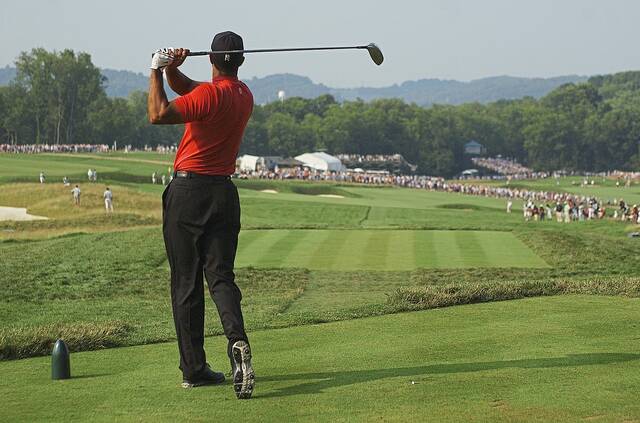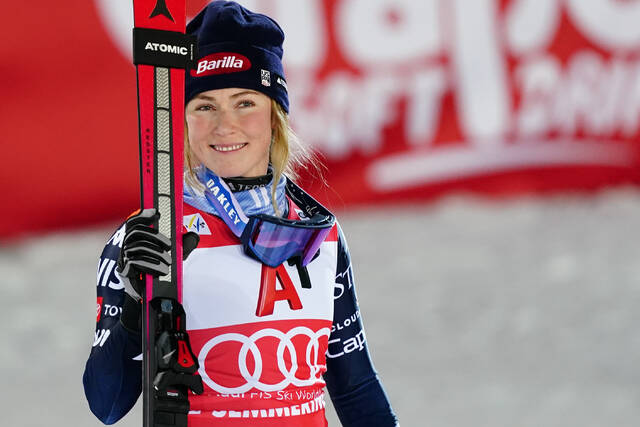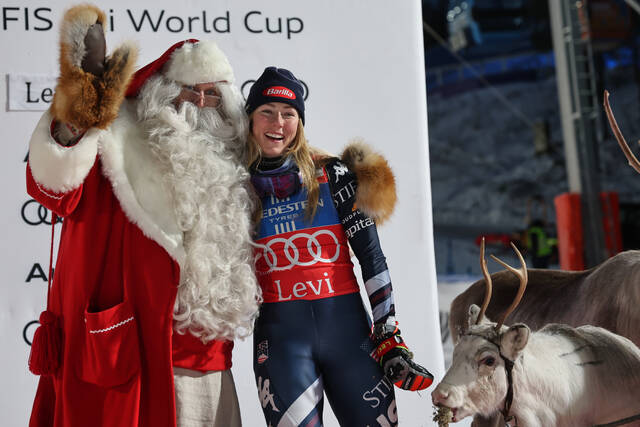NEW YORK — Sometimes, it can be hard to remember while watching Carlos Alcaraz compete at the U.S. Open that he is just 19.
He’ll hit a behind-the-back shot from the baseline — stunning enough, in itself — then gather himself seconds later to sprint forward for a backhand passing winner at the perfect angle. He’ll get to an opponent’s drop shot, race back to retrieve the next ball by flicking it while turned away from the net, run forward to get another drop shot, then sprint back yet again to slide while somehow twisting his body for a down-the-line forehand winner — all within one point.
“I fight for every ball until it bounces twice or it’s a winner. Those points sometimes lift me up. They make me smile and I enjoy the moment,” the Spaniard said. “Every now and then, you need to create a bit of magic.”
The No. 3-seeded Alcaraz has been doing just that with regularity as he heads into a one-of-a-kind U.S. Open final on Sunday against No. 5-seeded Casper Ruud, a 23-year-old from Norway. There is so much at stake for both: This is the first Grand Slam final between two players eyeing both a first major championship and the ATP’s No. 1 ranking.
“Of course, there will be nerves,” Ruud said, “and we will both feel it.”
Ruud got a taste of this sort of stage in June, when he made it to the French Open final before losing to Rafael Nadal, a 14-time champion there.
“He obviously gave me a good beating,” said Ruud, who is coached by his father, former professional player Christian Ruud. “After the final, I said, ‘If I ever reach one again, I hope it is not Rafa on the other side of the court in Roland Garros, because it’s sort of an impossible task, I think, for any player.’ I’m happy that it’s not Rafa on clay.”
That makes sense, sure.
Still, taking on Alcaraz at the moment is no easy feat, either.
This will mark Alcaraz’s debut on the last day of a Slam. He is the youngest man in a final at Flushing Meadows since Pete Sampras won the 1990 U.S. Open at 19, and the youngest in any major title match since Nadal won the 2005 French Open at that age.
Those two guys turned out OK: Sampras retired with 14 Grand Slam trophies; Nadal has a men’s-record 22.
Alcaraz would be the youngest — there’s that word again — ATP No. 1 since the computerized rankings began in 1973. He has been showing signs of being an elite player as a teen, rising up the rankings, winning titles and compiling victories over Nadal and 21-time major champion Novak Djokovic in consecutive matches (on clay, no less).
“He’s one of the best players in the world, for sure. He’s so young. He hits the ball so hard. I never played a guy who moves as well as him, honestly. I’ve seen him get a lot of balls, but I was hitting some drop volleys … (and) he’s getting there. How he’s able to extend points? Incredible,” Frances Tiafoe said after losing to Alcaraz in the semifinals Friday night.
“He’s a hell of a player,” Tiafoe said. “He’s going to be a problem for a very long time.”
That match lasted 4 hours, 19 minutes, and was Alcaraz’s third in a row that went the distance (the others were against 2014 U.S. Open champion Marin Cilic in the fourth round, ending at 2:23 a.m., and Jannik Sinner in the quarterfinals, ending at 2:50 a.m.). Only two other players in the Open era, which began in 1968, ever won a trio of matches that went the distance consecutively en route to a Grand Slam final.
That takes the proper mix of stamina and skill. Alcaraz, coached by 2003 French Open champion and 2003 U.S. Open runner-up Juan Carlos Ferrero, noted that he is 8-1 in five-setters in his nascent career and said he’s able to summon the “best version of myself” when the tension is highest.
“It’s true that I’ve matured very quickly, but that’s what tennis does: It makes you mature real quick,” Alcaraz said. “Maybe, when playing tournaments, I’ve become experienced and ‘older,’ with lots of responsibilities. But at home, with my family or friends — all the people I’ve known since being a kid — I feel like a 19-year-old.”


